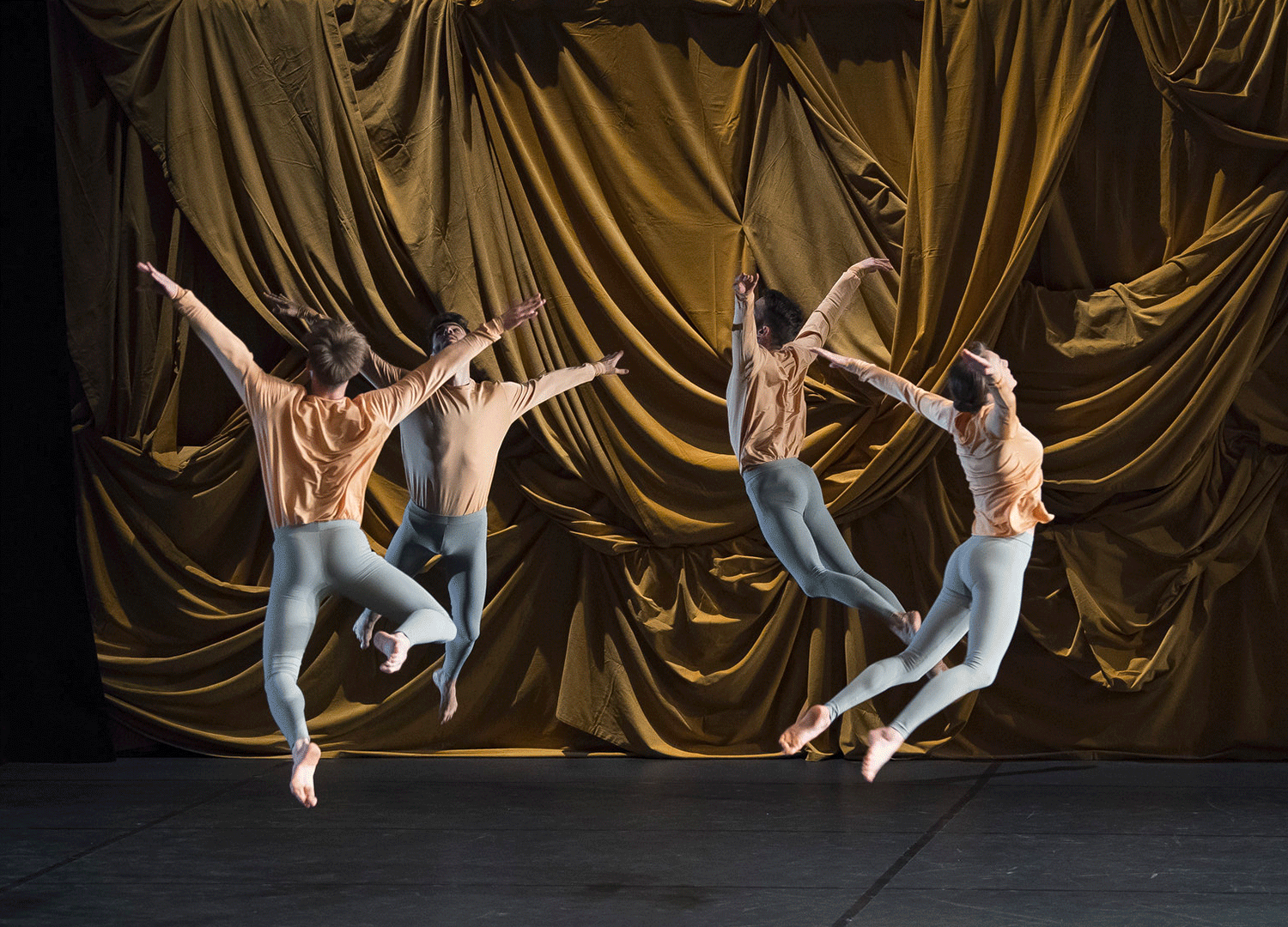Sounddance
Sounddance
Created on March 8, 1975 by the Merce Cunningham Dance Company in Detroit, Michigan (USA)
Premiered by the CCN Ballet de Lorraine March 14, 2014 at the Opéra national de Lorraine (Nancy)
10 DANCERS / 17 MINUTES
Sounddance could easily be considered one of Merce Cunningham’s most beloved pieces, by audiences and critics alike ! Cunningham created Sounddance upon his return after spending nine weeks with the Paris Opera Ballet in 1973 where he created Un Jour ou Deux. Back with his own dancers, he created a work in opposition to ballet’s uniformity and unison. He choreographed a fast and vigorous “organized chaos”. The stage is divided in the middle of its depth by a gracefully draped plush gold curtain, designed by artist Mark Lancaster. This division or compressing of the space adds to the overlapping and frenetic choreography, as if we were seeing a miniature dance cosmos through a microscope. The dancers enter the stage as if thrust from the curtain, and at the end of the dance, with their exit, they are swallowed by it, as though they were being sucked into a wind tunnel. Musician and composer David Tudor created a powerful and driving score or Sounddance. It provides the perfect energetic accompaniment to Cunningham’s fast paced choreography.
* The original music of Sounddance was David Tudor’s Toneburst. When the piece was revived in 1994, Tudor rethought the music, calling his new score Untitled 1975/ 1994.

Merce Cunningham
Born in Centralia, Washington on April 16, 1919, Cunningham began his career as a modern dancer at the age of 20, dancing for six years with the Martha Graham Dance Company. He presented his first recital in 1944, and formed the Merce Cunningham Dance Company in 1953. The company was a living canvas for his experimentation and the creation of his unusual pieces.
Over his long career he choregraphed more than 150 pieces and more than 800 events. Many dancers studied and worked with Cunningham before founding their own companies, among them Paul Taylor, Trisha Brown, Lucinda Childs and Karole Armitage ... He collaborated with many artists; his collaboration with John Cage had the most influence on his practice.
Together Cunningham and Cage proposed a series of radical innovations in dance. The most famous and controversial of these dealt with the relationship between dance and music, able to co-exist in the same space and time but needing to be conceived independently of each other.
Cunningham continued to experiment and innovate throughout his life, and he was one of the first to use new technologies in his own art form. He choreographed and taught almost until the day he died, July 26, 2009, and received many awards and accolades. Cunningham’s life and work have inspired the publication of four books and three important exhibitions; several of his pieces have been presented by other prestigious companies such as American Ballet Theatre, the Ballet de Lorraine, the New York City Ballet, the Paris Opera Ballet, the Rambert Dance Company in London and the White Oak Dance Project.
